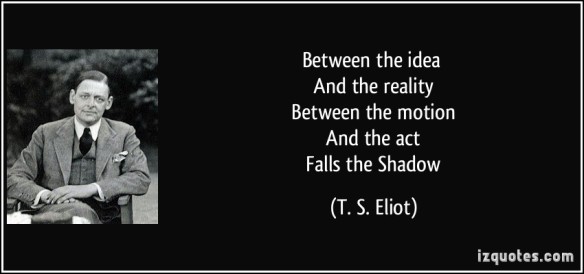
Texts live on long after the death of the author so ….Vonnegut writes in ‘God Bless You, Mr Rosewater.’…..Shakespeare explores the theme of…..etc
Respect the dead. Write in the PRESENT TENSE.


Texts live on long after the death of the author so ….Vonnegut writes in ‘God Bless You, Mr Rosewater.’…..Shakespeare explores the theme of…..etc
Respect the dead. Write in the PRESENT TENSE.
INDIVIDUAL PASSAGE ANALYSIS SKILLS PRACTICE
PAIRED PASSAGE ANALYSIS SKILLS PRACTICE
“Vonnegut suggests that….”

What is the difference between the idea of an essay and an essay of ideas?
It’s often tempting to begin an essay with this question in mind: ‘What do I (read: my teacher) want my essay to sound like?’ If you answer this question with , ‘Like an essay,’ then chances are you are going to use vocabulary and phrases which you can string together to make your essay sound like an essay. Essayspeak. Worse still, you might answer this question with: ‘Like I know what I’m talking about when actually I’m not at all sure.’ This is going to be a very mysterious read for anyone seeking knowledge and understanding of the thing about which your are writing.
These students are focusing more on sounding like an essay rather than presenting their knowledge or understanding:
The main idea that the poem seems to revolve around is a very important one…
The poem is one that describes an old man in relation to his surroundings in a very imaginative way….
Plath uses this technique as many readers can relate to this. She does this extremely well and it helps her get her point across to the reader.
So, what if you being with the question: ‘What do I know or understand and how can I show this in my essay?’ Notice the focus here. Assume we can all communicate our ideas in writing (the ‘essay’ bit of the task), and instead the focus is on what we know or understand about the subject matter of the essay. Guess what? An essay is simply sharing your knowledge and understanding with others in writing. So the focus should not be about appearing to write an essay but rather the knowledge and understanding that is being communicated by it’s very nature is an essay. The quality of the student’s thinking is the focus; how that gets written up is secondary to the content.
Remember that an essay is your big ideas about others’ big ideas and how they are presented.
In short:
ACTIVITY

Take a photo of your class quickly using an ipad camera. The image will most likely have some problems: not everyone will be in the frame; not everyone will be in focus. Take a second photo of the class and take the time for the ipad camera to find its focus and for you to ensure that all students are in the frame. The resulting photograph will undoubtedly be better. You will be able to zoom in on the detail of a student’s facial expression to interpret their mood from their expression, or zoom out to interpret the mood of the class as a whole.
Now take this theory (which involves giving time to the subject matter and the skill) and apply it to unseen poetry analysis.
Focus: You need to know what the poem is about or what happens in it. This is the subject matter of the poem – the bit that you need to lock onto and get an idea of. Extract these details (make some notes) and have a think about them as you re-read the poem. Sometimes taking them out of the poem and making a little list will enable you to make connections between them more easily than searching for them each time in the poem as you read through it.
Frame: Make sure you have the whole poem in your sights. Your analysis should have breadth. Ignoring parts of the poem because they don’t immediately make sense is an unwise decision. It is more than likely these parts hold the key to unlocking some of the complexity of the poem and the poet’s message. Think back to poems we have done in class: they often begin with the easier, concrete details and move into figurative language which deals with more abstract, complex ideas.
Zoom in: this is what you do when you look at the little details in a poem; turns of phrase; word choices; similes, metaphors, personification, repetition, sibilance, alliteration, assonance, ellipsis, end-stopped lines, caesura, enjambement, rhyme, rhythm (the list goes on). You job is not to ‘spot the device’; your job is to take a closer look at the language and explain its intended effect. We zoom in to find evidence to support our interpretation of a poem. Once you have these quotations, use these questions to get to word-level analysis:
Zoom out: this is what you do when you try to identify the ‘big ideas‘ in a poem. These could be things like beauty, identity, loneliness, love, power, relationships (between whom?), one’s past, one’s sense of self, evil, honesty etc. There are so many you couldn’t imagine them all. Reading the poem, you should get a feel for the ‘big idea/s’. Re-read the poem and look for clues to support your theory. The clues to these big abstract things are in the concrete details in the poem. To zoom even further out, you need to get to this big question:
What is the author suggesting about [the big idea] and what this suggests about what it means to be human? Yes, it’s a wide zoom out but you’re only going this far because you have all the evidence there in the detailed zoom in.
So the secret is to READ. Relax and RE-READ. This is where diffuse thinking is important. Your first idea or theory (‘it’s all about cancer’) may not have enough evidence to be supported. You need to be open to variations on a theme. The poem may well be about adversity, relationships and facing the idea of death but these themes could feature in a poem about exams as much as one about illness. You don’t have to come up with a concrete answer or harebrained theory.
Test your thinking by re-reading the text.
Take the time for the poem to come into focus. You won’t be able to do this kind of thorough thinking about each of the three poems you have to choose from in the exam, so make a decision in reading time and choose the one that seems clearest to you. Use your WIG:WIDGY ratio to determine the one which you ‘get’ the most.
How does this look when you start thinking about a poem? Read Gerald Manley Hopkins’s poem God’s Grandeur and then look at the notes I have made on the focus and frame sheet which helps me to remember the zoom in (little details) and the zoom out (big ideas) of the analytical thought process.
Then, the question is how to write this top-class thinking up?
You will use a traditional text essay structure and write in a formal register. No-one wants to hear an account of how you felt when you were reading the poem (none of this kind of unedifying drivel: “At first I thought this but then I thought that.” Save it for your diary, kiddo.) Instead you will have an introduction, body paragraphs and a conclusion. You will write in the present tense; despite the fact that you poet may be deceased, he or she lives on in the poem they have written.
INTRODUCTION:
Remember that this is the ‘sucker punch‘ of your essay. It knocks out the examiner with its insight and clarity. The examiner should be left a little breathless, if you will. It’s show-what-you-know time before you step them through how you got there. This is no time for treading-water-while-I-think writing which shows zero understanding of the poem in question (e.g.”There are lots of different themes in this poem and using many different poetic devices the poet presents a powerful message.” Garbage.) This is also no time for withholding information like a whodunnit novel or for teasing the examiner with an elaborate dance of the seven veils. This is sucker punch time: OOF!
An introduction should signpost:
BODY PARAGRAPHS:
Use your common sense here and take your cues from the poem and its subject matter. Your body paragraphs can follow:
A body paragraph should:
e.g. ‘This poem is all about love.’ [Mic drop]
Instead, look closely at the ideas presented and show a refinement of understanding:
e.g. ‘This poem is a celebration of the precious nature of love between siblings and at the same time a warning of how the loss of a parent can compromise that bond.’
CONCLUSION:
You should come back to the poem’s message in light of the evidence you have presented. You can look at the big picture here too – what the poem suggests about [the big idea] and what it means to be human.
This exam is made up of three sections. Section C is worth 50%.
A. Language structures: 10 ‘true or false’ questions about parts of a sentence: subject/verb/object; verbs, adverbs, adjectives, nouns, pronouns, sentence structures
B. English Language: short answer questions based on two non-literary texts. Key knowledge: mode, text types, function, audience, sentence types, sentence structures.
C. Unseen Poetry Analysis: an extended analysis of ONE poem from a selection of three poems.
Write in pen.
Keen to brush up on your poetic devices? Try to keep up with the rapper Testament as he raps poetic devices.
For a more relaxing way of revising some key devices, and perhaps expanding your knowledge, watch this video on poetic techniques.
Here is a comprehensive glossary of the terminology you might wish to use when revising poetry techniques.

Auguste Rodin’s The Thinker
Now you are ready to write up your response in a concise piece of prose.
HOW DO I STRUCTURE MY ANALYSIS?
Introduction: identify the purpose of the poem – the poet’s subject matter and message and a brief outline of the intention of the poem so that you can outline how this is achieved in more detail.
Body paragraphs: Use your common sense when organising your response. You could allow your paragraphs to follow the structure of the poem chronologically (stage by stage) – this may not be delineated by stanza or line but by units of meaning (read between the punctuation!). Your paragraphs might be based on the presentation of key people, places or ideas in the poem, or by the structure itself. You will PEE on your work, naturally.
Point. Evidence. Explanation.
(or an alternative acronym if you are more genTEEL)
Your analysis will get to word-level. This is not an essay to spot poetic device; this is to provide an interpretation of what the poet is communicating and how and why the poem is so written. You will quote key words and phrases and link these to the poem’s message and the poet’s techniques.
Conclusion: return to your introduction’s assertion – sum up how the poet’s intended impact is achieved and place this in a broader context: what the poem might be suggesting about what it means to be human.
GET THINKING
‘What does this suggest?”
‘What do I get/What don’t I get yet?’
‘What does the speaker of the poem think or feel or do about…?’
‘What is the reader supposed to think or feel or do about….?’
‘How does the author achieve this?’ (techniques, language choices, structural features)
‘What does the poem suggest about what it means to be human?’